Michael Eder & Philipp Frauenthaler
Going reactive with Spring WebFlux
#1about 2 minutes
Comparing Spring MVC and Spring WebFlux models
Spring MVC uses a blocking, thread-per-request model, while Spring WebFlux uses a non-blocking, asynchronous event loop model for better resource utilization.
#2about 3 minutes
A restaurant analogy for blocking vs non-blocking I/O
An analogy of waiters in a restaurant illustrates how the non-blocking model of Spring WebFlux is more efficient than the blocking, thread-per-request model of Spring MVC.
#3about 3 minutes
How the event loop model improves resource utilization
Spring WebFlux uses a small number of event loop threads that handle requests in a non-blocking fashion, preventing threads from waiting idly on I/O operations.
#4about 4 minutes
Core concepts of Project Reactor: Publisher and Subscriber
Project Reactor is built on the Publisher-Subscriber pattern, using Mono for single items and Flux for streams, which only emit data upon subscription.
#5about 7 minutes
Building a reactive API controller with Spring WebFlux
Implementing a reactive controller involves wrapping request and response types in Mono or Flux and using a functional, chained programming style with operators like flatMap.
#6about 5 minutes
Handling blocking I/O and transactions in reactive streams
Calling blocking database operations from a reactive stream blocks the event loop, requiring the use of `subscribeOn` to offload work and breaking standard `@Transactional` behavior.
#7about 6 minutes
Implementing manual transaction management in WebFlux
Transactions in a hybrid reactive application require manual management using `PlatformTransactionManager` and a dedicated single-threaded scheduler to maintain thread context across operations.
#8about 5 minutes
Exploring reactive data access and messaging options
To fully leverage WebFlux, the data access layer must also be reactive, using technologies like R2DBC, Hibernate Reactive, or native reactive drivers for NoSQL databases.
#9about 8 minutes
Lessons from a hybrid reactive and blocking architecture
A real-world job platform demonstrates a hybrid model, highlighting the complexity of mixing blocking and non-blocking code and reinforcing that a fully reactive stack is ideal.
#10about 11 minutes
Q&A: Thread safety, RxJava vs Reactor, and debugging
The Q&A session addresses common concerns, including the importance of thread safety, the similarities between RxJava and Reactor, and the inherent difficulties of debugging asynchronous code.
Related jobs
Jobs that call for the skills explored in this talk.
Matching moments
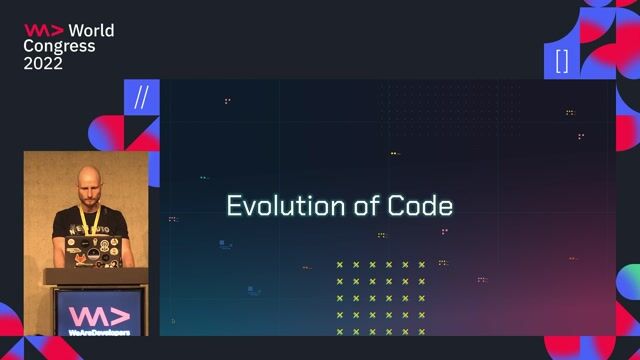
05:05 MIN
Moving from blocking to non-blocking with Spring WebFlux
Back(end) to the Future: Embracing the continuous Evolution of Infrastructure and Code
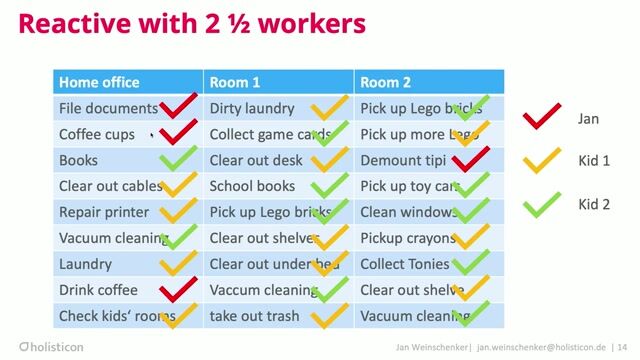
11:08 MIN
Exploring reactive Java frameworks and adoption challenges
Side-by-Side: Reactive vs non-reactive Java
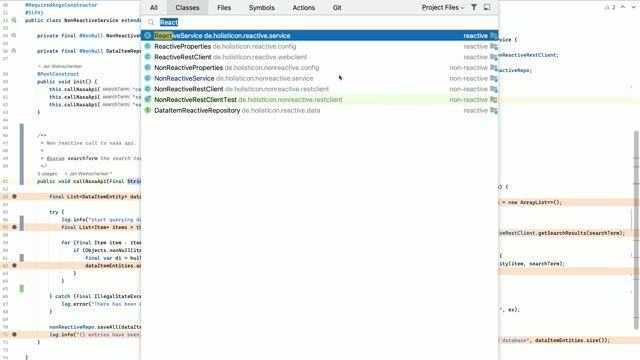
16:35 MIN
Live code demonstration of reactive Java
Side-by-Side: Reactive vs non-reactive Java
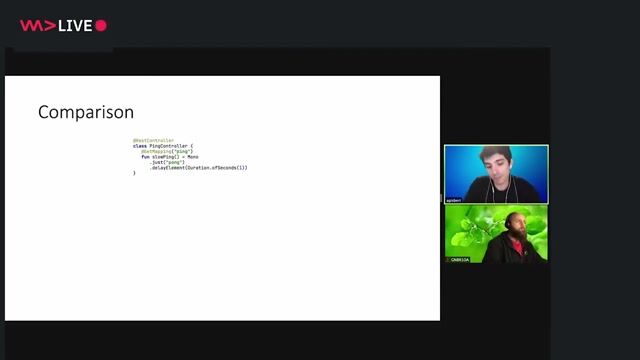
06:19 MIN
Comparing WebFlux and MVC performance under memory constraints
Slip Through the Boundaries of Legacy Systems with Kotlin and Spring WebFlux

43:46 MIN
Q&A on virtual threads, reactive programming, and Java 21
Introduction and pitfalls of Java's new concurrency model
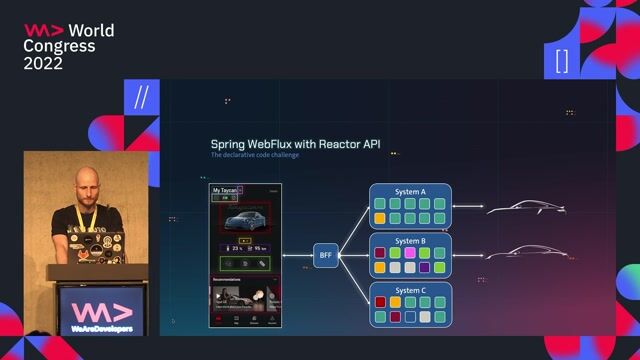
09:38 MIN
Using Kotlin Coroutines to simplify complex reactive code
Back(end) to the Future: Embracing the continuous Evolution of Infrastructure and Code
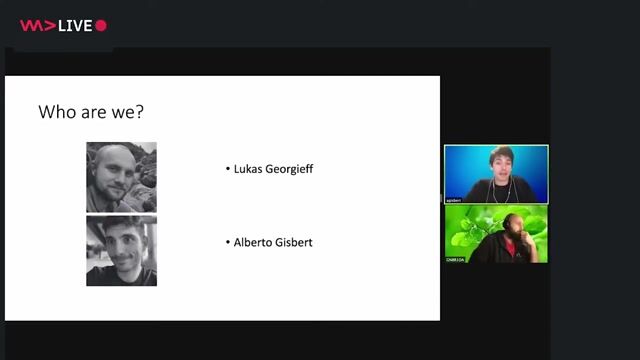
00:50 MIN
Building efficient services for legacy system environments
Slip Through the Boundaries of Legacy Systems with Kotlin and Spring WebFlux
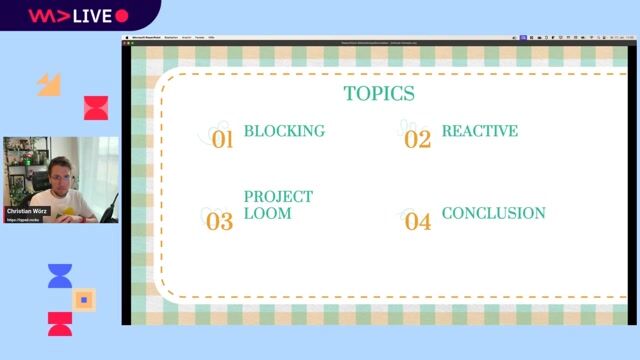
01:12 MIN
Building a traditional blocking web application
Java 21: The Revolution of Virtual Threads - A Deep Dive
Featured Partners
Related Videos
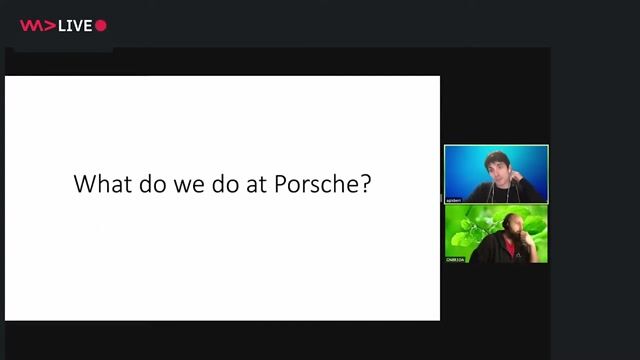 52:24
52:24Slip Through the Boundaries of Legacy Systems with Kotlin and Spring WebFlux
Lukas Georgieff & Alberto Gisbert
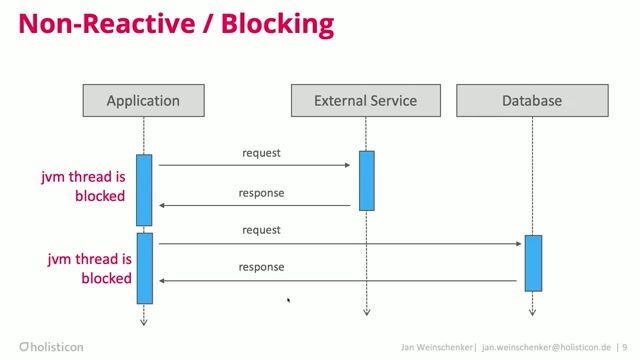 25:41
25:41Side-by-Side: Reactive vs non-reactive Java
Jan Weinschenker
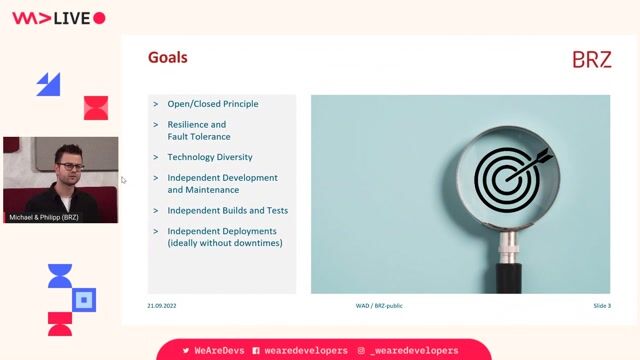 58:05
58:05Our journey with Spring Boot in a microservice architecture
Michael Eder & Philipp Frauenthaler
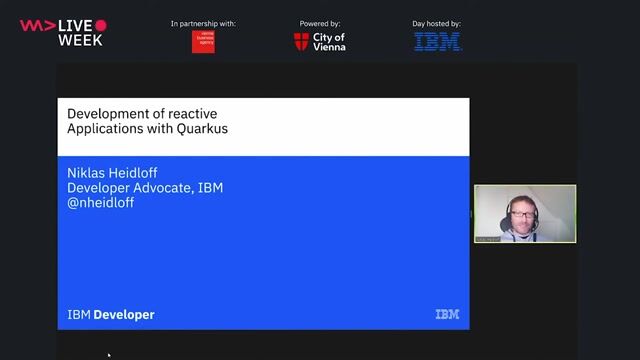 39:10
39:10Development of reactive applications with Quarkus
Niklas Heidloff
 55:30
55:30Java 21: The Revolution of Virtual Threads - A Deep Dive
Christian Woerz
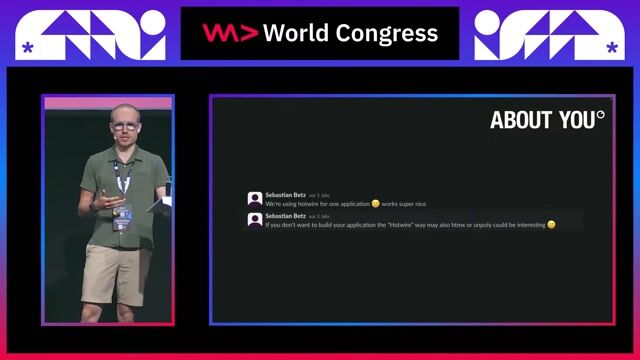 29:04
29:04Why HTMX is crushing React, Vue & Svelte.
Felix Eckhardt & Benedikt Stemmildt
 41:06
41:06Rethinking Reactive Architectures with GraphQL
David Leitner
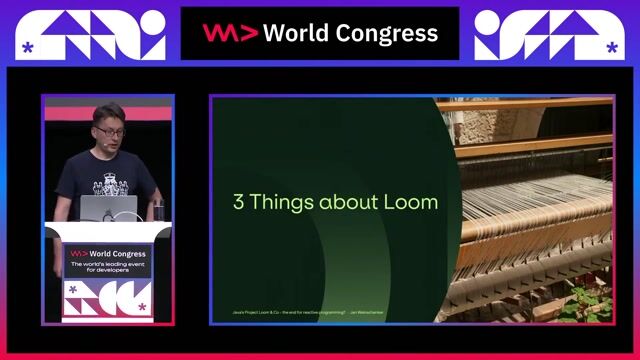 23:58
23:58Java's Project Loom & Co - the end for reactive programming?
Jan Weinschenker
From learning to earning
Jobs that call for the skills explored in this talk.



Software Engineer - Java, Spring, Angular
RM IT Professional Resources AG
Java
Scrum
DevOps
Spring
Angular
+1

Full Stack Entwickler (Java EE / Spring Boot) - Remote in Deutschland
CroX
€65-110K
Intermediate
CSS
GIT
Azure
JUnit
+15

Full-stack developer - Java/ Spring Boot/ Angular
ITech Consult AG
Remote
Intermediate
Java
Scrum
Splunk
Grafana
+5




Software Engineer Java Fullstack - Schwerpunkt Spring Boot
System Gmbh & Co.kg
Remote
Java
JIRA
REST
Gitlab
+10